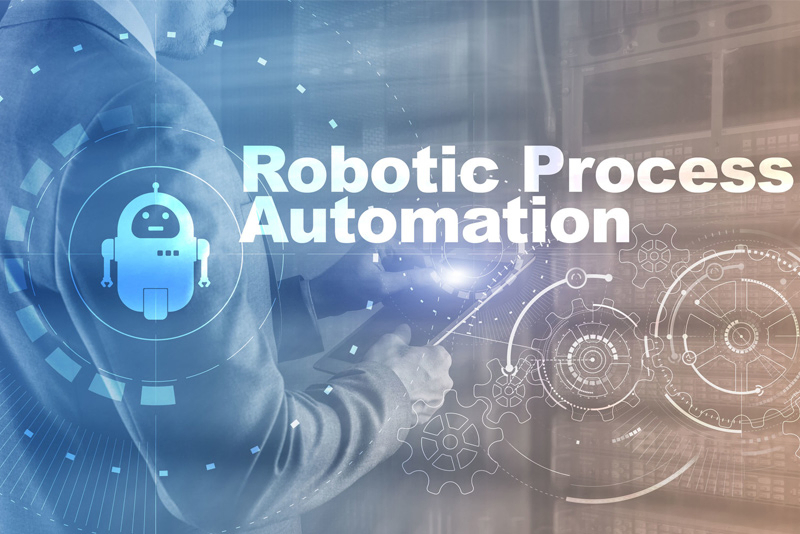Robotic process automation (RPA) has become one of the hottest buzzwords across all industries. Organizations are using robotic process automation tools to automate key business processes and allow employees to focus on higher value tasks. The implementation of RPA has benefited many industries such as healthcare, financial services, pharmaceutical, manufacturing, legal insurance, and many other sectors as they are using this automation concept mostly in routine processing tasks and other back-office functions. Robotic process automation (RPA) software uses artificial intelligence (AI) and machine learning (ML) to learn and improve manual processes to reduce the workload of human employees. With RPA, you are equipped with a tool that not only simplifies your work, but also saves a considerable amount of time and resources. However, its scope is ever increasing to capture human intellect and creativity.
Understand the Benefits of RPA
Often, the concept of RPA is misunderstood and used interchangeably with Business Process Automation (BPA). An effective solution to improve the overall operational efficiency, robotic process automation (RPA) involves the application of novel technologies like artificial intelligence, machine learning and computer vision to automate a variety of routine, repetitive business tasks such as data entry, data extraction, report generation and so on. While BPA seeks to improve a business process, RPA replaces manual and repetitive administrative tasks by an automated system that learns from human actions and then performs the tasks on its own (without human intervention). The future of work holds tremendous potential for RPA as organizations are increasingly searching for talents with advanced proficiency in RPA technologies. When compared to traditional technological solutions, RPA is easier to implement, maintain and update, while achieving the expected level of accuracy and efficiency. RPA implementation offers a new way of providing consistent and highly productive outcomes via technology. Businesses can use this technology to delegate business processes to software agents or automated computer programs. Here listed are some of the key benefits RPA can bring to a business –
- Faster Digital Transformation – RPA helps in speeding up the business’ digital transformation. This is possible as the software bots perform automated tasks faster and more accurately than a human workforce. In addition, they don’t require any breaks as automation can be run in the background and the employees can spend their time performing other activities in non-repetitive tasks. Reports from McKinsey suggest that about 45 percent of activities at work could be already automated by using the technology which is currently demonstrated.
- Minor Errors – In today’s completive business environment, even minor errors can cost companies millions of dollars. RPA can emulate human actions in a non-disruptive manner in order to expedite key business processes. RPA solutions ensure the necessary accuracy by reducing the errors and this helps in saving time and resources.
- Improved Productivity – Automation allows companies to optimize their business processes and increase worker productivity. With RPA in place, employees don’t need to perform the same repetitive tasks over and over again. They can focus on more interesting and rewarding work. According to a Forrester study, about 57 percent of companies saw higher employee engagement with RPA software. Improving employee engagement ensures smooth running of business functions.
Top Tools for Robotic Process Automation (RPA)
Here listed are some of the most popular robotic process automation tools based on their features –
- Blue Prism– This tool allows employees of all skill levels to add automation to their workflows. The tool includes a drag-and-drop process automation builder which makes it easy to customize tasks and add automation where it is required. The platform’s digital workforce includes artificial intelligence capabilities that can imitate and learn business processes just as humans .The console gives organizations a real-time look at process proficiencies and allows them to scale digital worker volume as needed .It offers automation for deployments on-premises, cloud, hybrid and multi-cloud. Any user can easily design automation or use the processes included in the platform. Other features include – good security and compliance capabilities, and solid work queue management and scaling features.
- InflectraRapise – Primarily built for test automation, this system helps test all web, mobile, desktop and APIs. The tool not only tests, but also understands and helps manage tests that span multiple technologies at once. It is user-friendly for both developers and non-developers.
- UiPath – UiPath uses AI to automatically scan a business’ processes and determine the best ones to automate. The solution also includes a submission hub where employees can submit requests for processes that they would like to have automated. The tool includes options for no-code, low-code, and full-code, enabling users of any expertise to apply automation to their department. The tool is equipped with a unique feature “Task Capture” that allows businesses to automatically document their processes and ensure that every employee is performing them the same way. It also includes both attended and unattended automation, giving companies control when they need it and when they don’t need it.
- Automation Anywhere – A global leader in Robotic Process Automation (RPA), this tool empowers customers to automate end-to-end business processes with intelligent software bots. The company offers the world’s only cloud-native and web-based automation platform combining RPA, artificial intelligence, machine learning and analytics. Higher security and faster scalability are the main features of the Automation Anywhere platform; it provides different security methods such as authentication, credentials and encryption.
- Pega– With its model-driven, unified approach, Pega delivers an enterprise-grade, agile application with a no-code authoring experience. It powers digital transformation by unifying leading artificial intelligence, intelligent automation, and customer engagement capabilities. Due to its scalable architecture and the low-code platform, Pega transforms and adapts the complexity of any project.
- WorkFusion – A cloud-based RPA solution, WorkFusion examines an organization’s processes to determine which ones are best suited for automation. The tool includes pre-built packages that quickly automate the most time-consuming processes that businesses face. The ML bots come pre-trained and are well-configured reducing the number of errors right out of the box and lessening the IT department’s workload. The platform also includes advanced analytics to provide insights into how automation is affecting the most important key performance indicators (KPIs). With this platform, users can quickly create new processes, implement the system and monitor its true value within 12 weeks.
- NICE – The NICE RPA solution comprises software robots on back-end servers to automate end-to-end processes that many employees deal with every day. The tool’s bots work collaboratively with human employees directly from their desktop, making it easy for the employee to intervene if a task does require human input. It leverages leading AI capabilities, including Optical Character Recognition (OCR), chatbots, desktop analytics and machine learning to extend automation even further.The system also includes bots that don’t require human intervention, so they can work during the business’ off-hours.
- AssistEdge – AssistEdge RPA by EdgeVerve Systems provides end-to-end automation with contextual intelligence and OCR capabilities. The technology tool easily scales across different departments and functions. It offers predictive alerts on bot performance and service level agreement (SLA) failures, allowing companies to stay ahead of any issues. The business intelligence dashboards include details on both historical performance and forecasting with actionable insights. It also has enterprise-grade security and access features, including GDPR compliance.
- Kofax – A highly flexible and easy-to-use RPA tool, Kofax offers a broad range of capabilities that help support projects of any size and scope. It provides organizations with the option to automate entire workflows or just certain parts, depending on their needs. It is a no-code solution designed to automate multi-step, labor-intensive tasks across a variety of data sources and systems. Its no-code feature allows teams to automate tasks without advanced knowledge. The AI capabilities in this tool also help reduce the number of errors during data entry and document processing.
- akaBot – A user-friendly RPA platform, akaBot provides comprehensive solutions for automation and digitization that help businesses save about 60 percent of costs and 80 percent of operating time. The tool is capable of flexibly deploying either on-premise or SaaS, interacting on the UI and API level and integrating with other technology (naming OCR/AI) in order to automate complex business tasks. akaBot also provides a large set of mini-solutions which are ready-made, pre-built automated processes specific for each business/industry.
Robotic process automation (RPA) is transforming the way companies operate and adopt digital technologies. Automation technologies help optimize existing business processes and reduce the entire cost of processes. However, adopting RPA technology does not mean the end of administrative jobs; rather, it will free human resources to focus more on value-based roles. Automating the workforce using RPA, can help organizations gain the edge over their competition by improving productivity, reducing errors, driving down costs and improving efficiency. Businesses can reach out to reputable business process outsourcing companies that can help handle routine back office functions, thereby reducing the costs and enabling more focus on core competencies.




